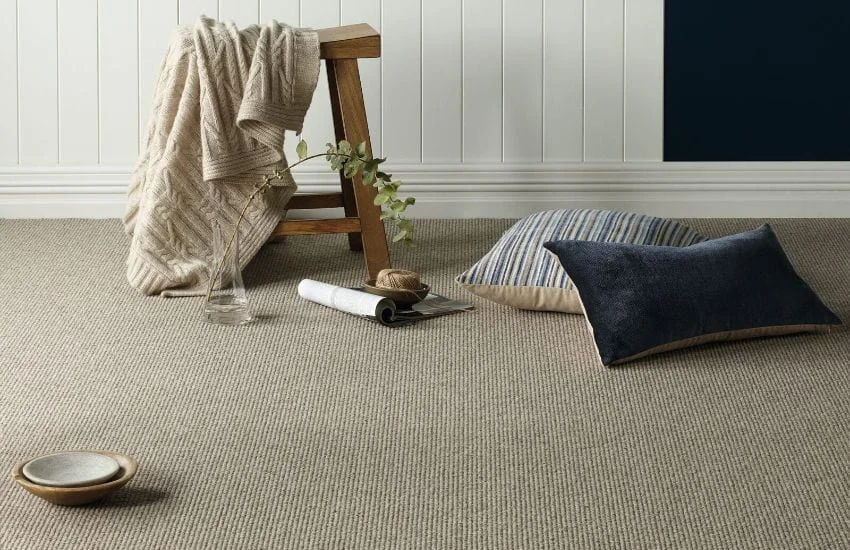Sisal carpets are renowned for their natural beauty and eco-friendly appeal, but one of the most common questions buyers have is whether they stand the test of time. Known for being made from the durable fibers of the agave plant, sisal carpets offer a unique blend of rustic charm and strength. This introduction delves into the factors that contribute to the longevity and performance of sisal carpets, examining how well they hold up in various environments and whether they can be a long-term investment for homes and offices.
Unyielding Fibers: The Robust Material Strength of Sisal Carpets
Sisal carpets are made from the fibers of the agave plant, known for their natural strength and rigidity. The tough structure of these fibers gives sisal carpets exceptional durability, allowing them to withstand daily wear and tear. Sisal’s strength lies in its natural plant-based composition, which makes it resistant to stretching, ensuring the carpet maintains its shape over time. This material is particularly effective in high-traffic areas, making it a popular choice for hallways, stairs, and living rooms. Its robust structure, however, requires careful handling to avoid exposure to moisture, which can weaken its fibers.
Superior Wear Resistance: Sisal Carpets Built to Endure High-Traffic Areas
Sisal carpets offer excellent wear resistance, making them ideal for high-traffic areas. The tightly woven fibers can withstand heavy foot traffic, ensuring that the carpet doesn’t easily flatten or show signs of wear. Sisal’s natural abrasion resistance allows it to handle everyday friction from movement and furniture without significant damage. Unlike synthetic carpets, sisal doesn’t pill or fray easily, maintaining its appearance over time. However, it’s important to note that while sisal excels in dry conditions, prolonged exposure to water can cause the fibers to weaken, reducing its wear resistance.
Moisture: The Achilles Heel of Sisal Carpets
One of the few downsides of sisal carpets is their vulnerability to moisture. As a natural fiber, sisal readily absorbs water, which can cause the fibers to swell, warp, or break down over time. This makes sisal less suitable for areas prone to high humidity, such as bathrooms, basements, or kitchens. If exposed to water, the carpet can also develop mold or mildew. For this reason, sisal carpets should be placed in dry environments, and any liquid spills should be cleaned up immediately to preserve the longevity of the fibers.
Essential Care Tips for Maintaining Your Sisal Carpet’s Longevity
Sisal carpets require regular care to maintain their durability and appearance. Since the fibers are absorbent, spills need to be blotted immediately with dry cloths to prevent staining or water damage. Vacuuming is essential to remove dust and debris, as sisal’s coarse texture can trap dirt over time. However, cleaning with water or steam is discouraged due to the fibers’ moisture sensitivity. Instead, dry cleaning or spot treatments with a mild detergent should be used. Proper maintenance ensures that sisal carpets remain strong and retain their natural beauty, extending their lifespan significantly.
Environmental Resilience: The Ideal Setting for Sisal Carpets
Sisal carpets perform best in dry, temperate climates where they are less likely to encounter moisture issues. They are ideal for indoor settings, particularly in homes with controlled environments, and can also work well in semi-outdoor areas like covered patios or sunrooms, provided the exposure to moisture is minimal. However, sisal’s durability may decrease in overly humid or damp environments, where the fibers could absorb moisture and degrade. It is important to assess the installation environment to ensure the longevity of the carpet, as the right placement significantly affects its performance.
Longevity in Commercial vs. Residential Use
Sisal carpets excel in both residential and commercial settings due to their durability and resistance to wear. In residential environments, they handle moderate to heavy foot traffic well, making them a popular choice for living rooms, stairs, and hallways. In commercial spaces, sisal carpets offer long-lasting performance, especially in offices, reception areas, and retail stores. However, the level of maintenance and moisture control is even more crucial in commercial use to ensure longevity. With proper care, sisal carpets can last several years in both settings, though high-traffic areas may require periodic replacement.
Embracing Nature: The Eco-Friendliness and Sustainability of Sisal Carpets
Sisal carpets are highly sustainable, as they are made from biodegradable, renewable plant fibers. The agave plant, from which sisal is harvested, grows quickly with minimal water and pesticide needs, making it an eco-friendly choice for flooring. Because sisal is a natural material, it doesn’t release harmful chemicals or pollutants into the air, contributing to better indoor air quality. Additionally, its production has a lower environmental impact compared to synthetic carpets, which rely on petrochemicals. Sisal’s sustainability adds to its value, making it an environmentally responsible option for homes and businesses.
Sisal Carpets: Balancing Cost-Effectiveness and Environmental Sustainability
Sisal carpets offer excellent value for their cost, especially considering their durability and eco-friendliness. While they may be more expensive than some synthetic options, their long-term performance justifies the investment. Sisal’s ability to withstand heavy foot traffic and its resistance to pilling and flattening make it a cost-effective option for areas that see frequent use. The only downside is its vulnerability to moisture, which might lead to additional care costs if placed in unsuitable areas. However, for dry environments, sisal carpets provide great longevity, offering a high return on investment over time.
Natural Allergen and Static Resistance: A Healthier Choice for Your Space
Sisal carpets are naturally anti-static, meaning they don’t attract dust or allergens like synthetic carpets often do. This makes them an excellent choice for allergy sufferers, as the coarse fibers don’t trap dust, pollen, or pet dander as easily. Regular vacuuming keeps the surface clean, promoting a healthier indoor environment. Sisal’s anti-static properties also prevent the buildup of static electricity, which is beneficial in homes with sensitive electronics. This combination of allergen resistance and anti-static performance makes sisal a smart choice for those looking for healthier, low-maintenance flooring.
Conclusion
In conclusion, sisal carpets are a durable and eco-friendly option, offering excellent wear resistance and strength, particularly in dry, high-traffic areas. While they require careful placement away from moisture and consistent maintenance to prevent damage, their longevity in both residential and commercial settings makes them a worthwhile investment. Their natural composition also contributes to improved indoor air quality, making them a healthy and sustainable flooring choice. For those seeking a balance of aesthetics, durability, and environmental responsibility, sisal carpets provide a strong solution that can stand the test of time with proper care.

How long do sisal carpets typically last?
Sisal carpets have gained popularity in recent years thanks to their natural beauty, eco-friendly qualities, and impressive strength. Made from the durable fibers of the agave plant, sisal is considered one of the toughest natural flooring options available. Unlike synthetic carpets, which may wear down quickly or lose their texture, sisal maintains its firm structure and stylish appearance for many years when placed in the right environment. Homeowners who value sustainability often choose sisal not only for its environmental benefits but also for its long-lasting performance in busy households.
On average, sisal carpets can last between 5 to 10 years, depending on the level of use and the care they receive. In high-traffic areas such as hallways, living rooms, and stairs, sisal performs exceptionally well, resisting wear and flattening. In lower-traffic areas like bedrooms or home offices, its lifespan can be even longer. However, its durability is closely tied to how it is maintained. Regular vacuuming, prompt cleaning of spills, and protecting it from excessive sunlight or moisture are key factors in extending its longevity.
frequently asked questions about Sisal Carpets Durable
Are sisal carpets durable?
Yes, sisal carpets are highly durable. They are made from strong agave plant fibers and can withstand heavy foot traffic, making them suitable for busy households and offices.
How long do sisal carpets typically last?
With proper care, sisal carpets can last several years, especially in dry indoor spaces. Their longevity depends on maintenance and the level of foot traffic.
Are sisal carpets good for high-traffic areas?
Absolutely. Sisal carpets are tough and perform well in hallways, living rooms, stairs, and offices where durability is essential.
Do sisal carpets wear out quickly?
No, sisal carpets resist wear and tear better than many synthetic carpets. However, they may fade under direct sunlight and are sensitive to moisture.
Are sisal carpets suitable for homes with pets or kids?
Yes, but with caution. While sisal is durable, it can stain easily if exposed to spills, so extra care is needed in homes with children or pets.








